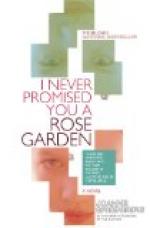With annuals, of course, there are some exceptions to this rule,—in the case of sweet peas, nasturtiums, mignonette, portulaca, poppies, and the like, where great quantities are massed.
When you have prepared a hardy seed bed of the dimensions of ten by thirty feet, which will allow of thirty rows, ten feet long and a foot apart (though you must double the thirty feet if you intend to cultivate between the rows with any sort of weeding machine, and if you have room there should be two feet or even three between the rows), draw a garden line taut across the narrow way of the plot at the top, snap it, and you will have the drill for your first planting, which you may deepen if the seeds be large.
Before beginning, make a list of your seeds, with the heights marked against each, and put the tallest at the top of the bed.
“Why bother with this, when they are to be transplanted as soon as they are fist up?” I hear Mary Penrose exclaim quickly, her head tipped to one side like an inquisitive bird.
Because this seed bed, if well planned, will serve the double purpose of being also the “house supply bed.” If, when the transplanting is done, the seedlings are taken at regular intervals, instead of all from one spot, those that remain, if not needed as emergency fillers, will bloom as they stand and be the flowers to be utilized by cutting for house decoration, without depriving the garden beds of too much of their colour. At the commercial florists, and in many of the large private gardens, rows upon rows of flowers are grown on the vegetable-garden plan, solely for gathering for the house, and while those with limited labour and room cannot do this extensively, they can gain the same end by an intelligent use of their seed beds.
Many men (and more especially many women), many minds, but however much tastes may differ I think that a list of thirty species of herbaceous perennials should be enough to satisfy the ambition of an amateur, at least in the climate of the middle and eastern United States. I have tried many more, and I could be satisfied with a few less. Of course by buying the seeds in separate colours, as in the single case of pansies, one may use the entire bed for a single species, but the calculation of size is based upon either a ten-foot row of a mixture of one species, or else that amount of ground subdivided among several colours.
Of the seeds for the hardy beds themselves, the enticing catalogues offer a bewildering array. The maker of the new garden would try them all, and thereby often brings on a bit of horticultural indigestion in which gardener and garden suffer equally, and the resulting plants frequently perish from pernicious anaemia. Of the number of plants needed, each gardener must be the judge; also, in spite of many warnings and directions, each one must finally work on the lines of personally won experience. What is acceptable to the soil and protected by certain shelter in my garden on one side of hill crest or road may not flourish in a different soil and exposure only a mile away. One thing is very certain, however,—it is time wasted to plant a hardy garden of herbaceous plants in shallow soil.




